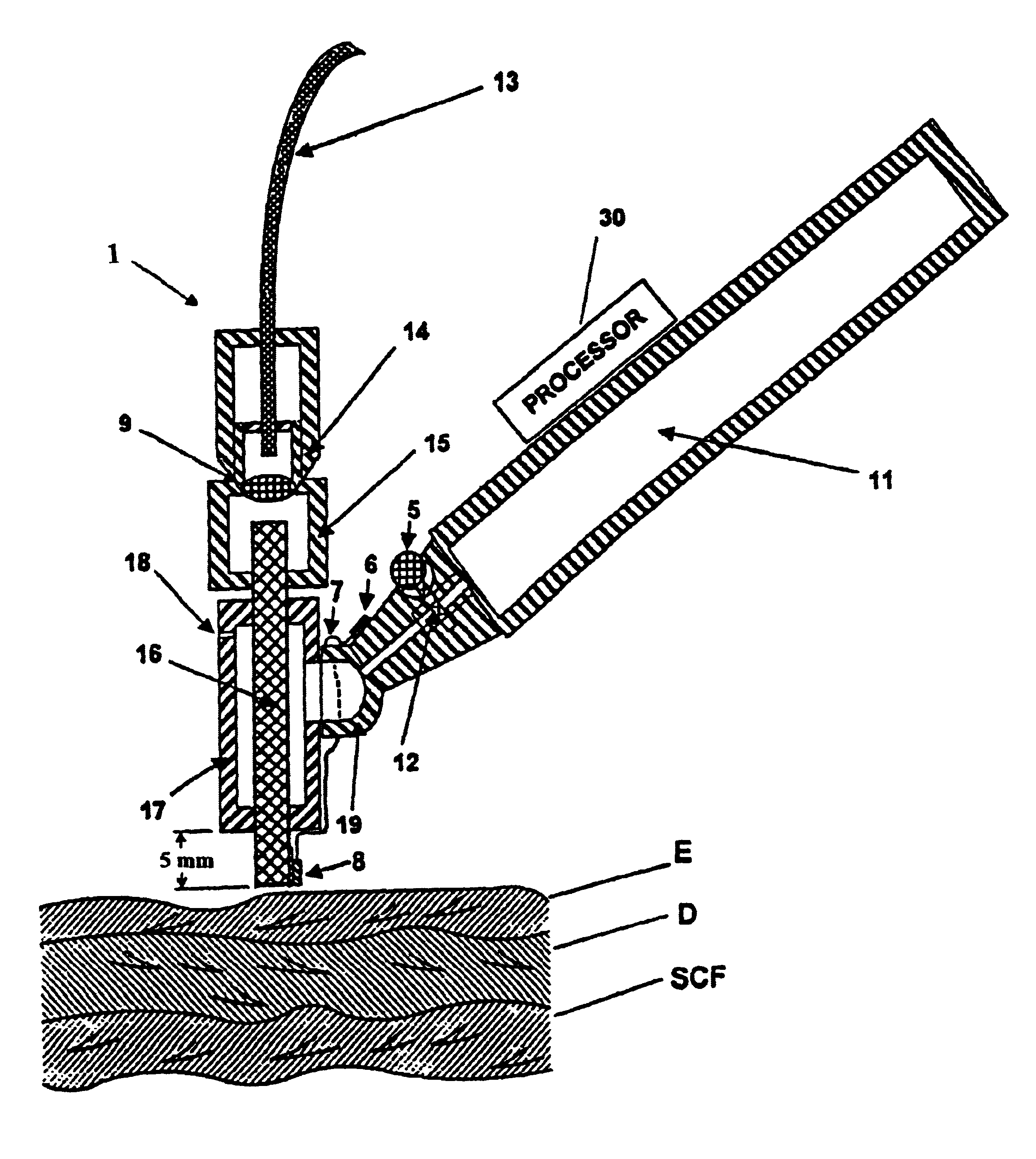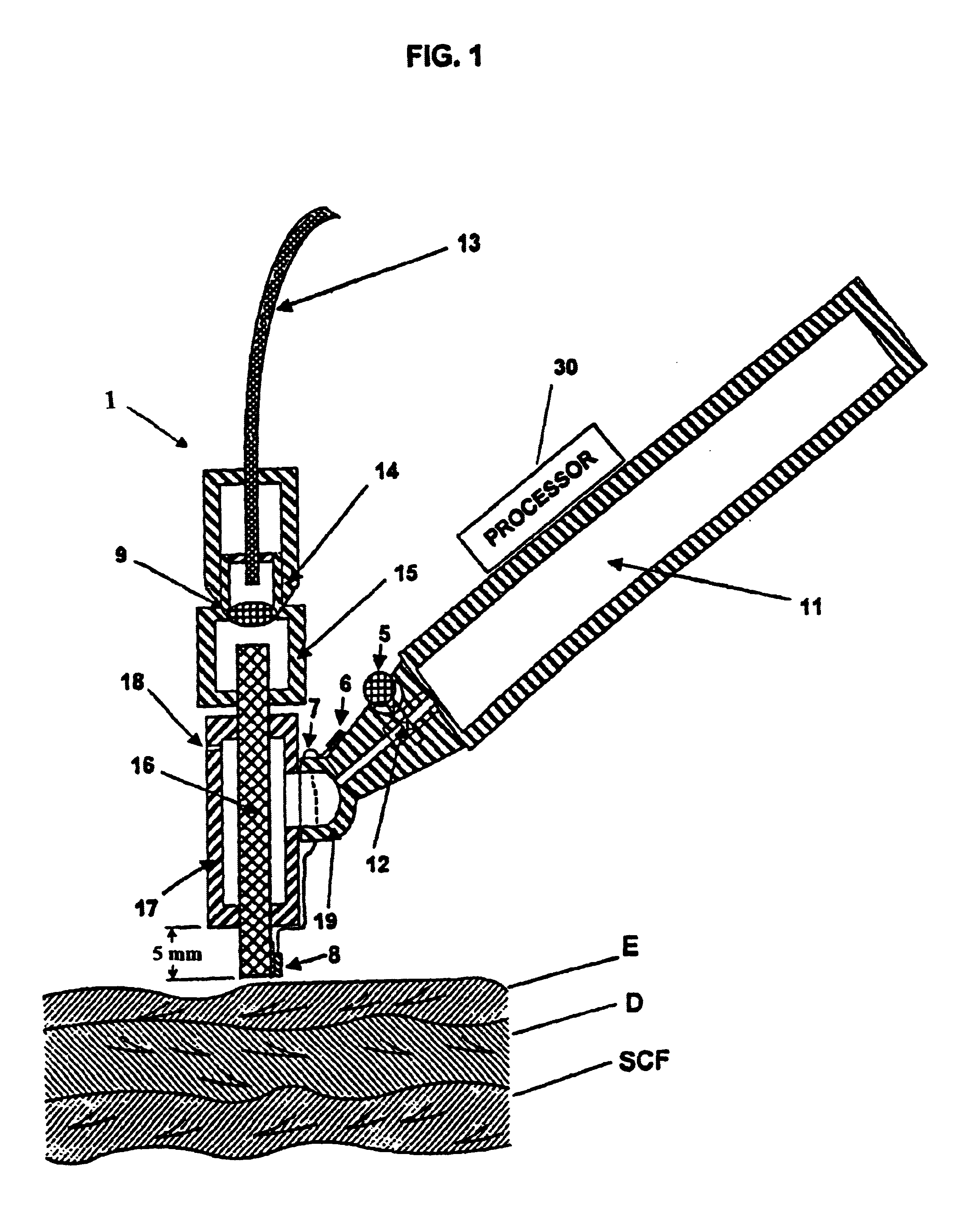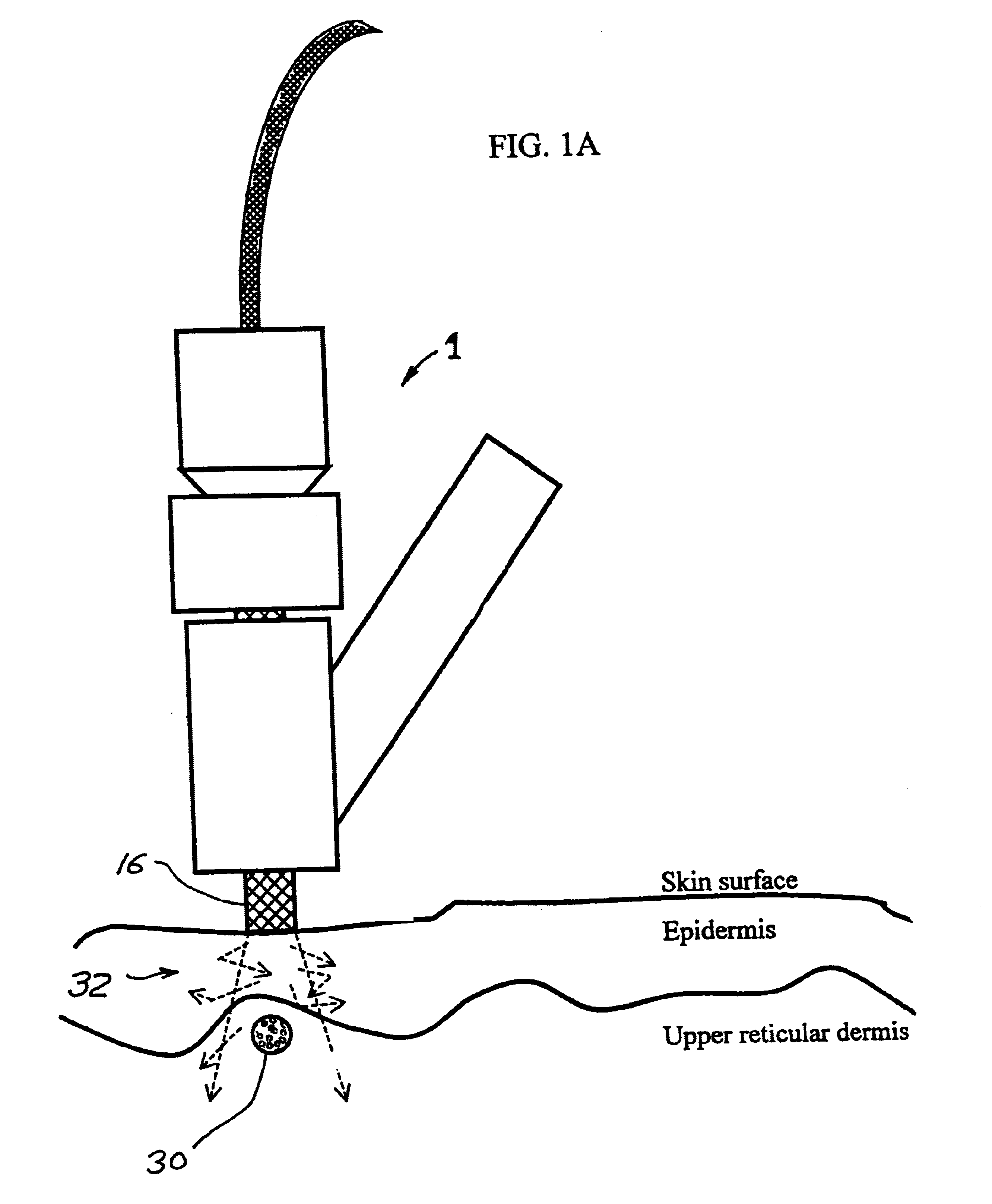Tissue cooling rod for laser surgery
a cooling rod and laser surgery technology, applied in the field of skin cooling, can solve the problems of significant damage, skin freezing, and insufficient heat removal of water cooled cold contact window devices, and achieve the effect of preventing unwanted surface tissue damage, preventing significant damage, and preventing skin freezing
- Summary
- Abstract
- Description
- Claims
- Application Information
AI Technical Summary
Problems solved by technology
Method used
Image
Examples
Embodiment Construction
It is very important for all of these embodiments and in other embodiments that will be apparent to persons skilled in the art that the cooling rod has a very high thermoconductivity coefficient and low absorption of the irradiating light. The substance used for the cryogenic cooling can be chosen based on the particular application. The important thing is to use a proper time of cooling in order to reach a required low temperature of the tissue at the required depth. Persons skilled in the art will recognize that certain material and configuration of the rod, container, coolant and connector will be preferred for different skin type, different lesions and different applications. The reader should note that the preferred embodiment of this invention can be used without this laser to provide cryogenic treatment to surface skin lesions. The same skin cooling can be provided with about 1 / 10 the cryogen as direct open spray. An important application of the device for cryogenic treatment...
PUM
 Login to View More
Login to View More Abstract
Description
Claims
Application Information
 Login to View More
Login to View More - R&D
- Intellectual Property
- Life Sciences
- Materials
- Tech Scout
- Unparalleled Data Quality
- Higher Quality Content
- 60% Fewer Hallucinations
Browse by: Latest US Patents, China's latest patents, Technical Efficacy Thesaurus, Application Domain, Technology Topic, Popular Technical Reports.
© 2025 PatSnap. All rights reserved.Legal|Privacy policy|Modern Slavery Act Transparency Statement|Sitemap|About US| Contact US: help@patsnap.com



